In the process of creating clothes, much attention is paid to the finishing. Patch pockets are considered not only a functional part of the decoration, but also a decorative one. And although at first glance there is no difficulty in making such a detail, precision and accuracy are required here. Additionally, you need to know how to sew a patch pocket so that it looks beautiful and harmonious, fits into the concept of the thing. Additionally, fittings such as buttons or zippers can be used.
- Basic shapes of patch pockets
- Options, methods, sewing technology
- The first "haute couture" method: a pad
- The second way: a pocket with a facing on the top and a lining
- Patch pocket with lining, stitched onto the garment
- Patch pocket with one-piece facing on the upper edge
- Unlined patch pocket with drawstring at top edge in fantasy style
- Pattern of a patch pocket and its processing (technology)
- How to sew a pocket to a coat without a visible stitch
- Recommendations
Basic shapes of patch pockets
There is a huge variety of patch pocket shapes. Conventionally, items of this type are divided into 2 groups - simple and complex. Those, in turn, are divided into subgroups. This classification does not depend on the size, color and material, but only on the shape and manufacturing method.
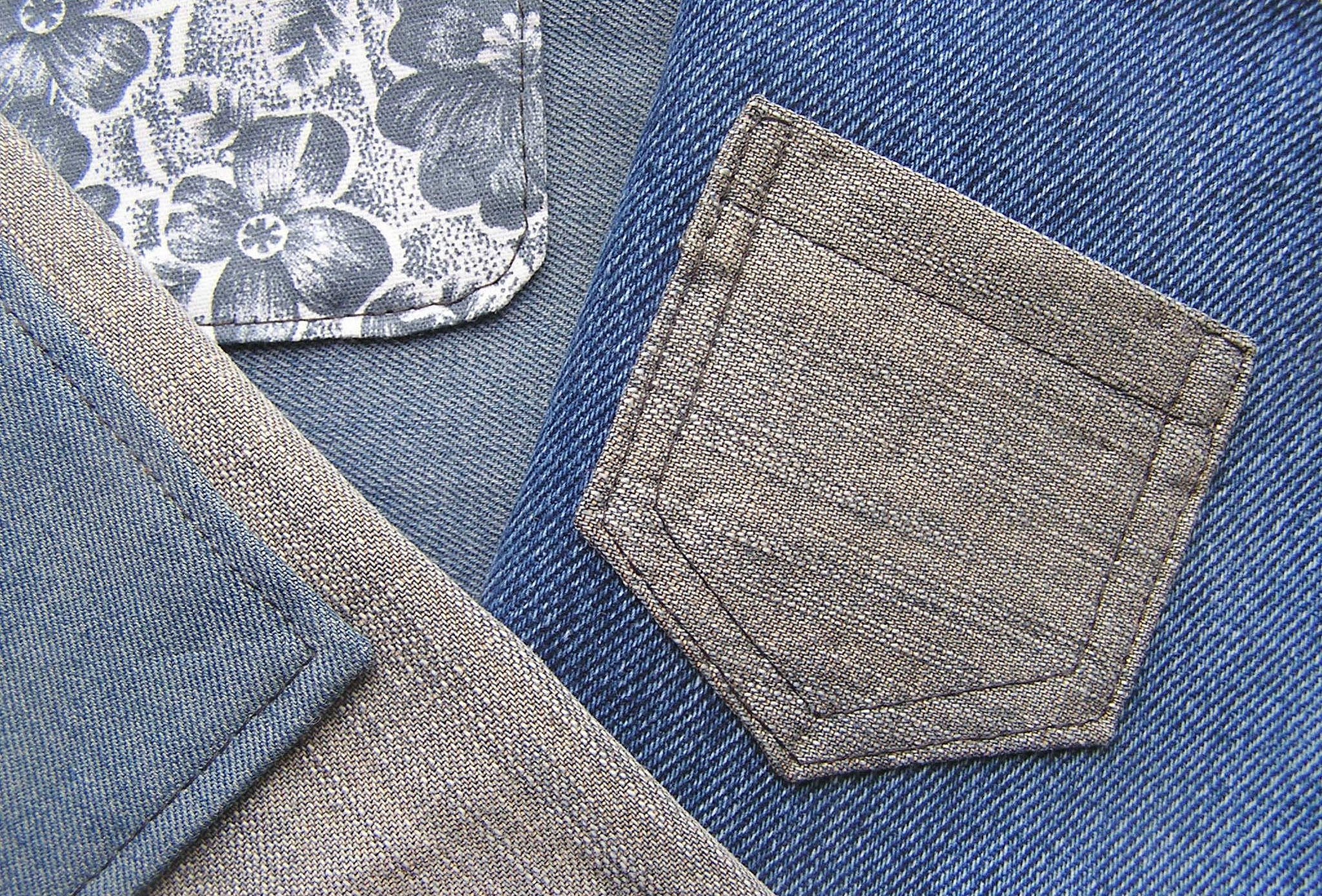
Basic shapes of patch pockets:
- Simple shapes are a rectangle, the lower corners of which can then be cut, rounded, beveled. The upper corners can also be cut, and the lower ones remain unchanged. Simple shapes also include a kangaroo pocket. Such options are used to decorate sweatshirts, T-shirts, jackets, sports dresses and much more.
- Complex shapes can have the appearance of a fabric with folds, gathers, reliefs, flaps. The base is often decorated with frills, flounces, piping, edging, ribbons, lace. This option refers to fantasy types of products.

This classification is suitable for knitted and textile elements of this type. But there is also a simpler division: rectangular, oval and figured.
Options, methods, sewing technology
Initially, it is important not only to decide how to sew a pocket, but also how to sew the detail to the item. There are several particularly popular technologies that are easy to perform. You can choose the right option based on the style of the outfit itself.
The first "haute couture" method: a pad
This type of stitching is especially popular with craftsmen. It is used to sew a detail onto a coat or jacket. The pattern is prepared as follows:
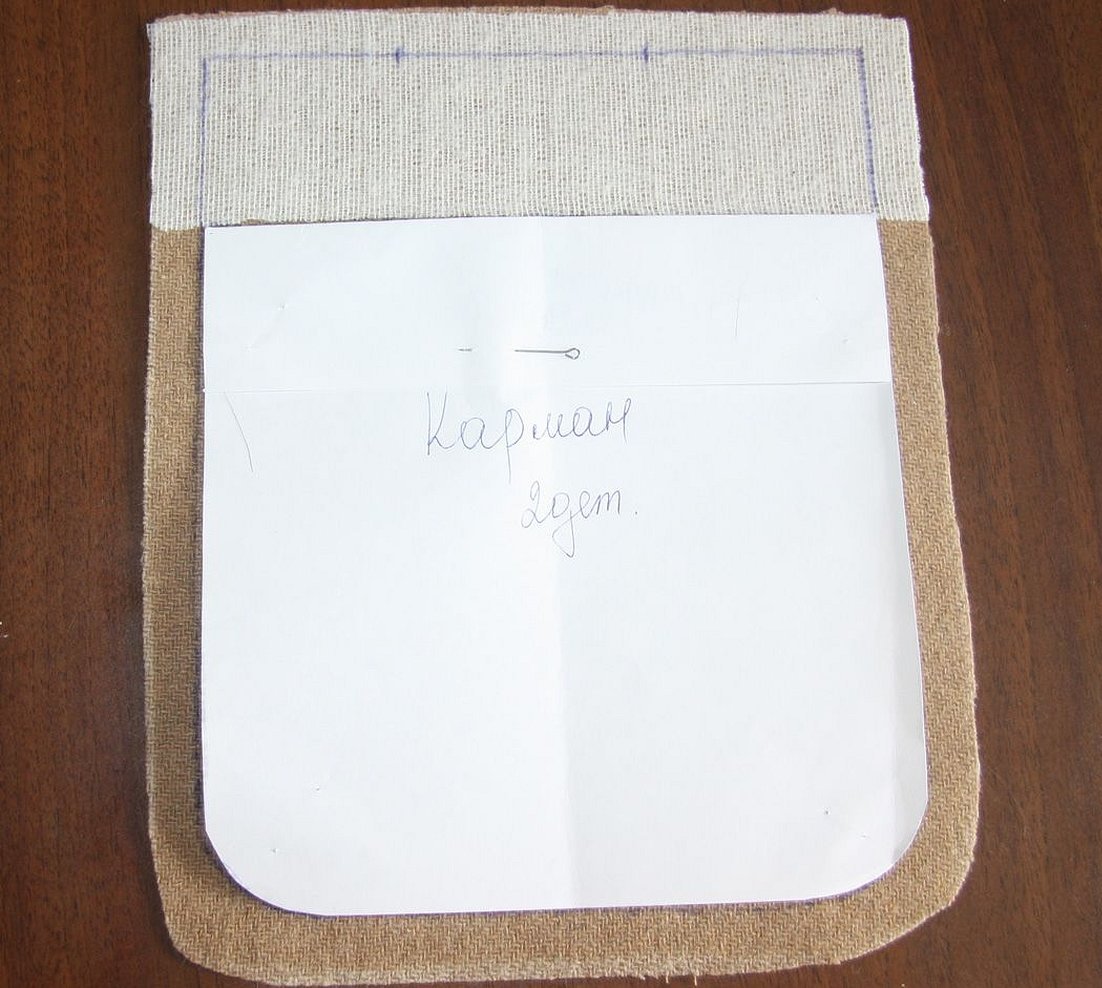
Step-by-step creation algorithm:
- First, a part is made from the main material, then from the lining. The elements are placed on top of each other and pinned with safety pins. The bottom seam is processed on a sewing machine.
- Mark the pocket on the garment. Pin the piece and sew it on a sewing machine.
- Baste the main part of the pocket onto the lining, having previously folded the allowances. Iron the piece. Hand sew the pocket along the contour of the allowances to the base, using a hidden seam.
Please note! You need to iron from the inside, but not from the top, since all the allowances and basting areas may show through on the fabric.
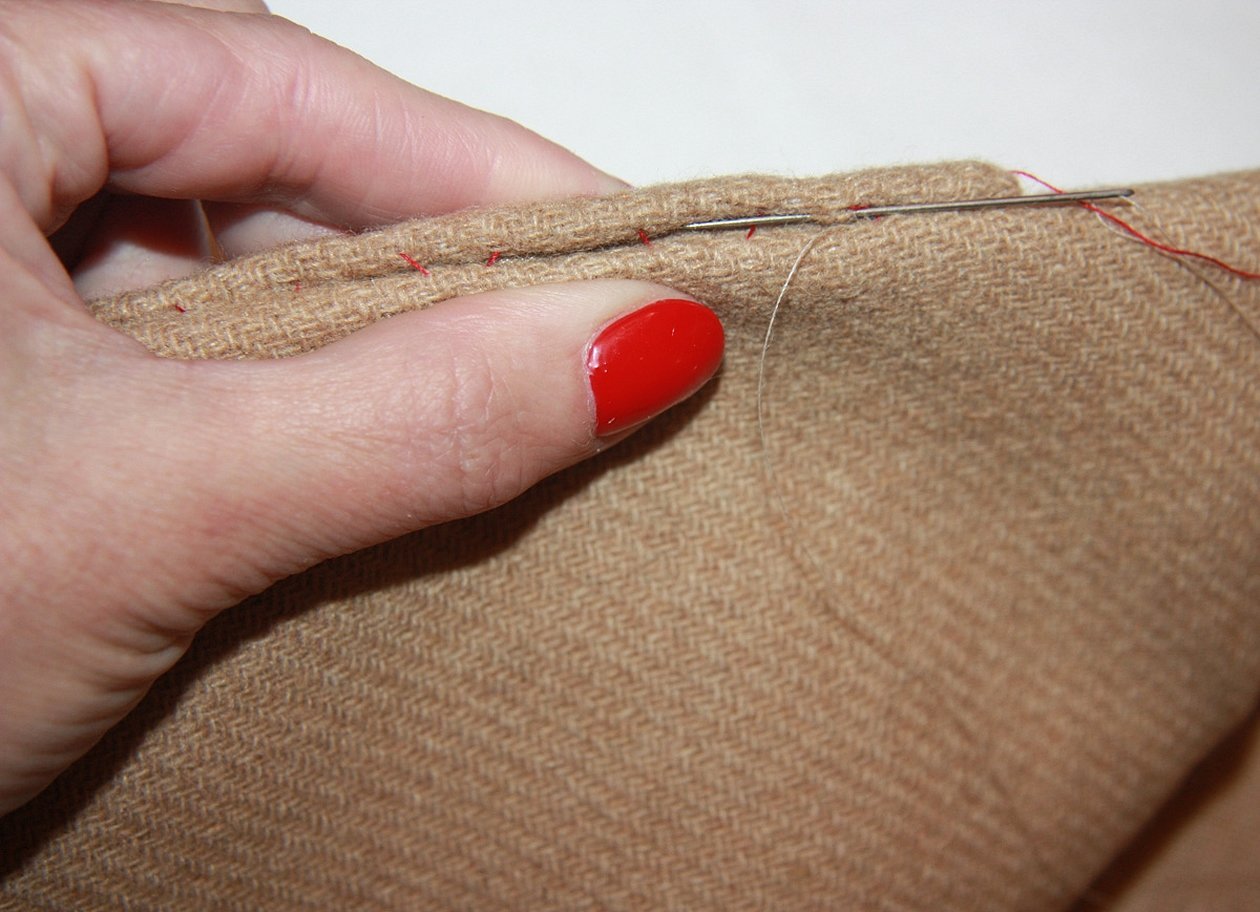
Experienced seamstresses can make the final seam on a sewing machine with a special foot.
The second way: a pocket with a facing on the top and a lining
First, you need to prepare a pattern from fabric and lining. The upper part of the facing, using the most optimal type of stitch for the selected fabric. You need to turn the facing to the outside along the fold line. Cut off 0.3 cm from the bottom and sides of the lining. Remove the fabric above the fold line.
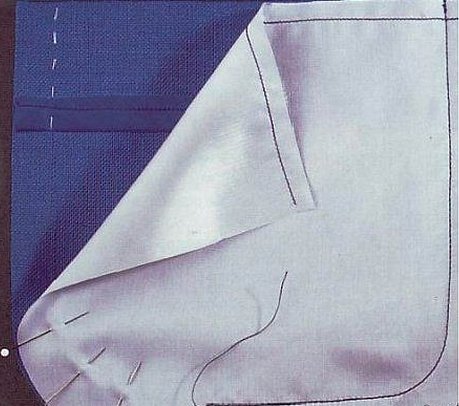
Place the pieces together, align them in the center, and pin the pieces together along the top of the facing. Stitch, but leave the top edge open. Trim and cut the seam allowances where the rounding occurs. Assembly is completed after ironing.
Patch pocket with lining, stitched onto the garment
Thanks to this processing technology, you can get a very voluminous pocket. The peculiarity lies in the sequence of work. The seam here does not necessarily have to be hidden:
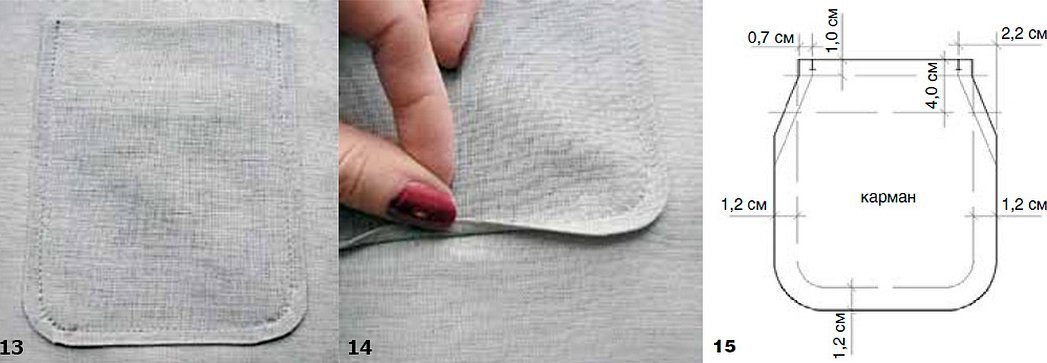
Additional information! The size of the lining piece should be 1-2 cm smaller than the main piece.
This method can be used to make cells for an organizer. It is also suitable for clothes.
Patch pocket with one-piece facing on the upper edge
One-piece facing is used to make parts for shirts and blouses. The work is done as follows:
- Mark the flap line for the top facing on the pocket.
- Finish the edge of the facing with a zigzag stitch.
- Place the facing of the upper part on the front side.
- Sew the detail on the sides.
- Return the facing inside and stitch it to the side parts of the element.
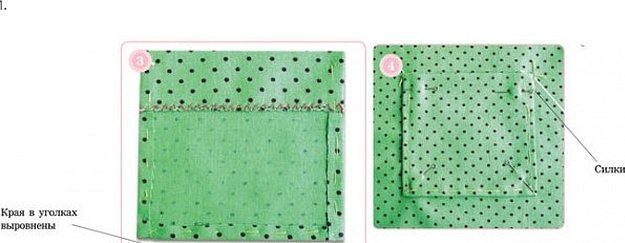
Important! In this version, it is worth using a sealant that should not go beyond the line of the facing formation.
Next, the finished part is sewn to the fabric. This can be done with a hidden or open seam.
Unlined patch pocket with drawstring at top edge in fantasy style
A pocket with a drawstring along the upper edge in a fantasy style without using a lining can be used to decorate many products. Such a detail can be used to decorate a summer dress, a children's T-shirt for a girl, a beach bag.
How to sew a fantasy version of the product:

You can sew this with the main fabric in different ways. It is better if the seam is invisible, so as not to overlap the drapery, not to deform the shape itself.
Pattern of a patch pocket and its processing (technology)
The principle of making a detail for a thing without a lining is not difficult. First, a pattern of a patch pocket is formed. You can use the following scheme for making:

Next, you need to do the following:
- Overlock all edges of the fabric.
- Iron all seams and allowances that should be visible from the wrong side.
- The top allowance must be tacked to the wrong side.
A patch pocket, the sewing technique of which consists of only a few stages, is not difficult. Even a beginner can cope with such a task.
How to sew a pocket to a coat without a visible stitch
There are several options for sewing a pocket onto a garment without a visible stitch. The following algorithm is simple:
- Cut out a life-size template from paper
- Place the template on the canvas and trace it exactly along the outline.
- At a distance of 1 cm from the resulting line, the contours are repeated.
- Attach the pocket to the canvas and place installation control marks.
- At the control points, secure the part to the canvas using safety pins.
- Turn over the seam allowances and attach the element from the inside using a regular basting stitch.
- Then you can sew this detail on a sewing machine.
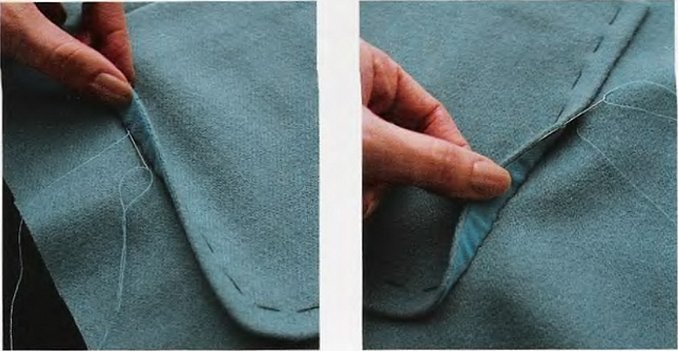
The same sewing option can be used as a basis, as in the case offered by the “haute couture” method.
Recommendations
To make sewing such a detail easier and get a better result, it is worth considering some recommendations from experienced craftswomen:
- The lining ensures that the edges of the pieces are smoother, the shape is symmetrical, and the dimensions are the same.
- The color scheme of the lining can match the main fabric or contrast.
- It is better to pin a pocket to an item using safety pins, as they do not leave marks.
- To prevent the finished product from becoming deformed later, the lining fabric must be decatized.
- The item can be sewn in by machine or by hand. It is preferable to do the procedure by hand, using the "goat" stitch.
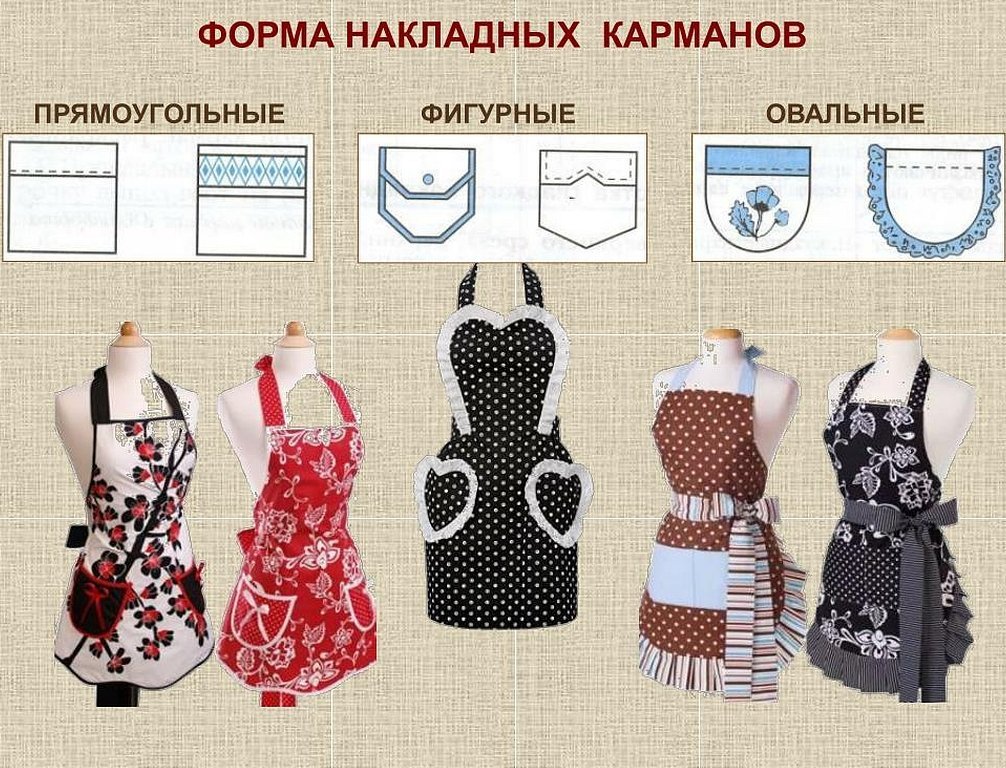
This pocket only seems simple at first glance, but the manufacturing and the way this detail is sewn onto clothing indicate otherwise.
To make trousers, a skirt or another wardrobe item more functional, patch pockets are often used. They can be made using different cutting and sewing techniques. They can also be sewn to the main fabric in different ways. In any case, a jacket, bag or coat with such a decorative element will look much more attractive.




